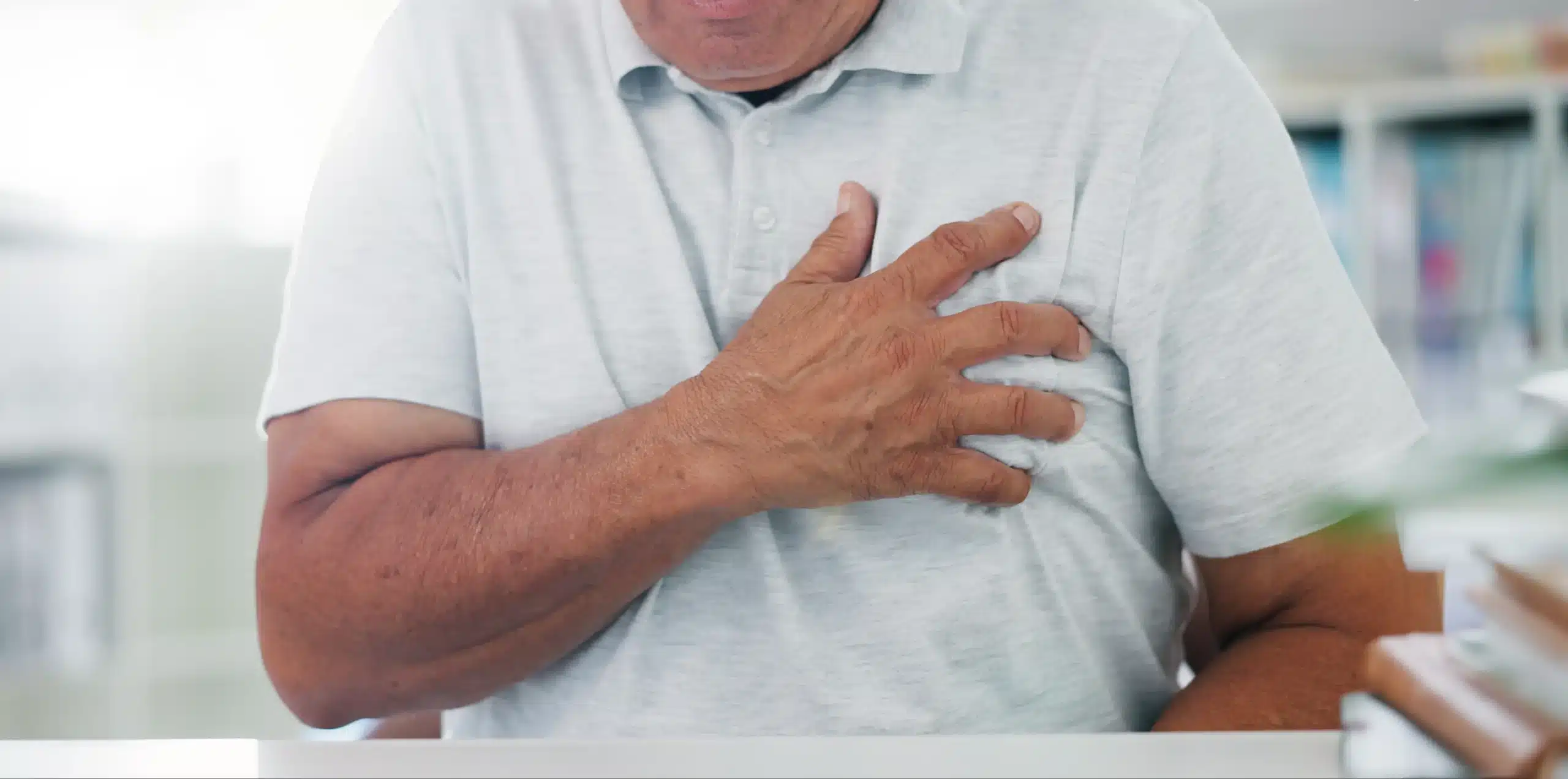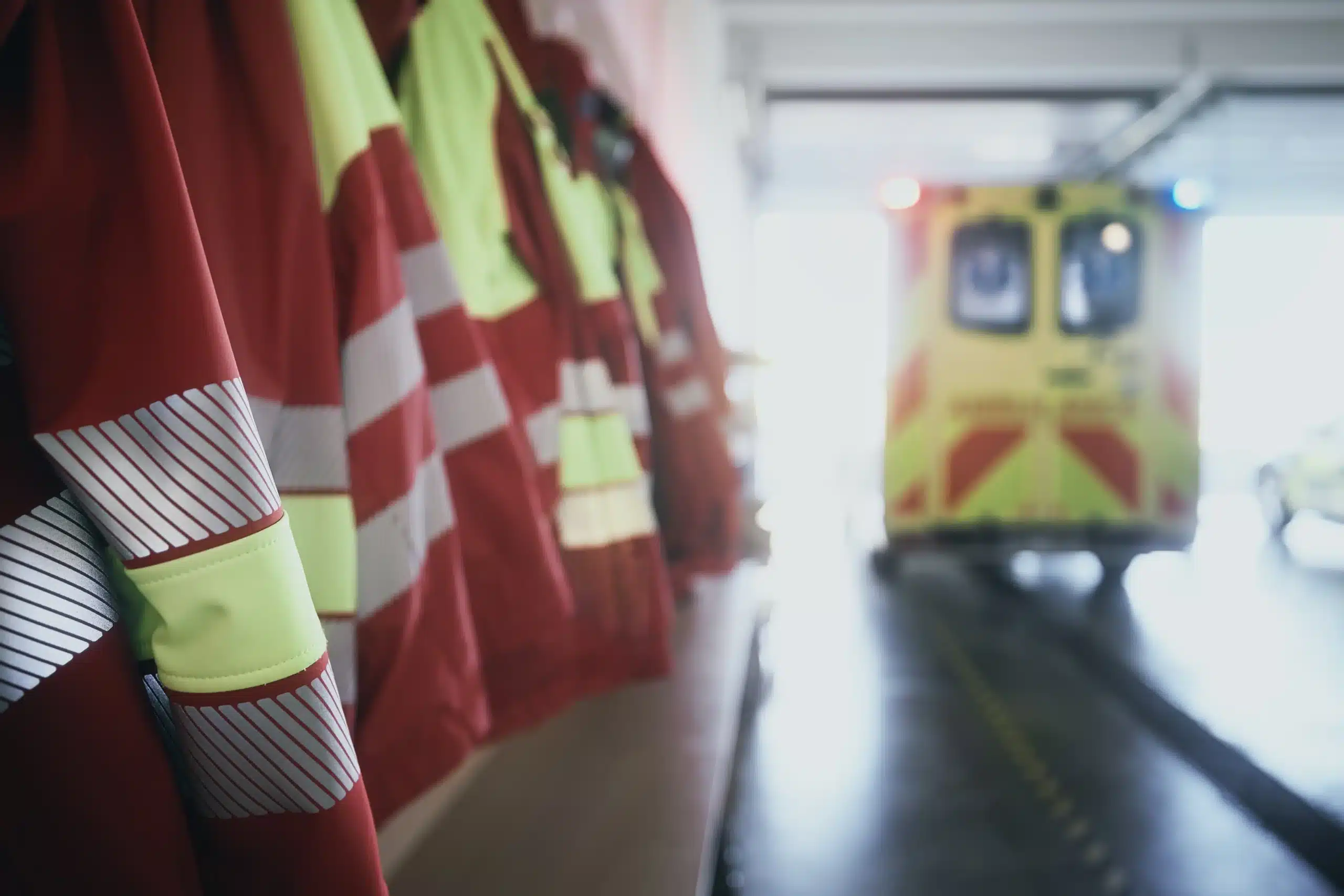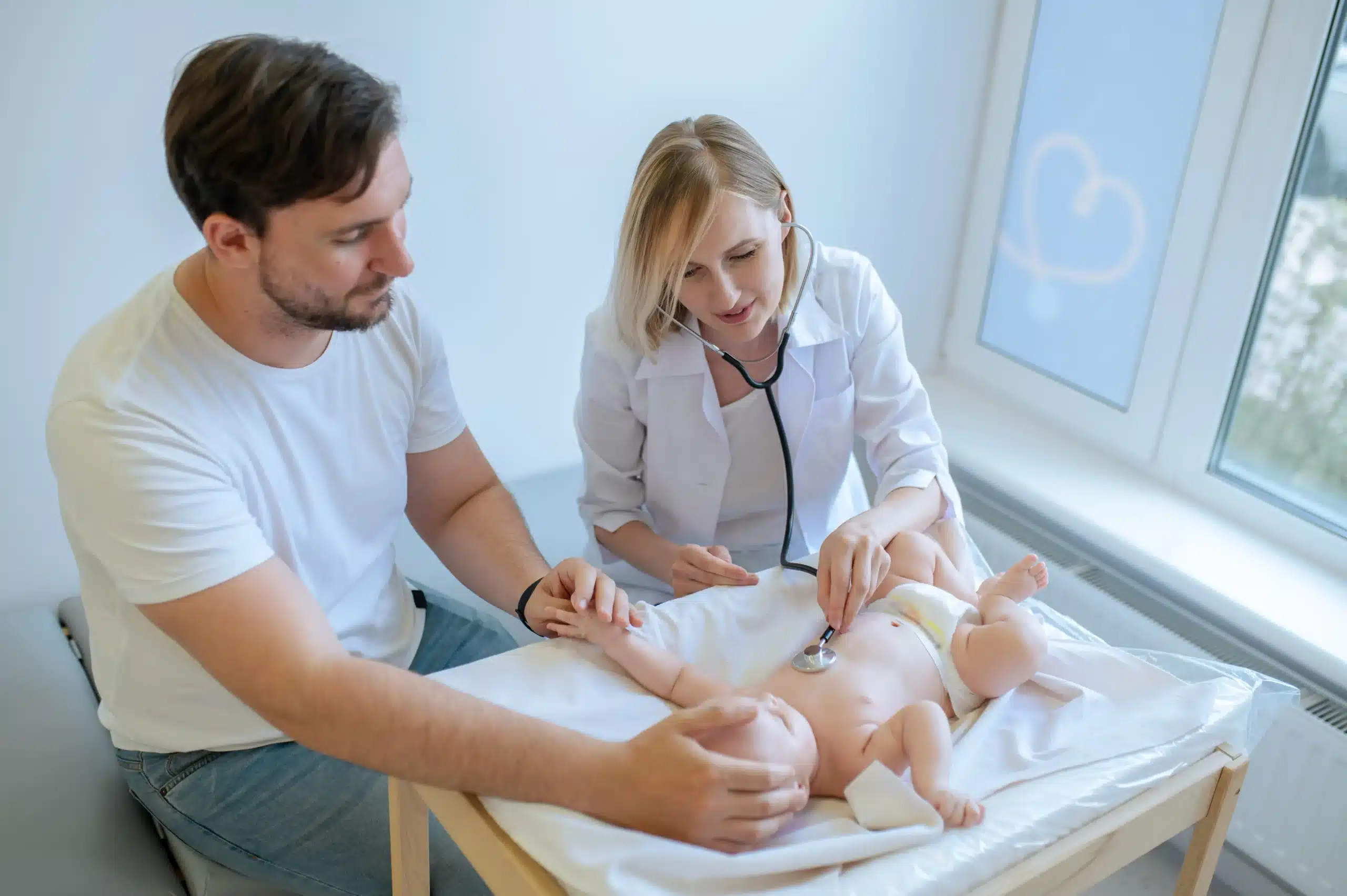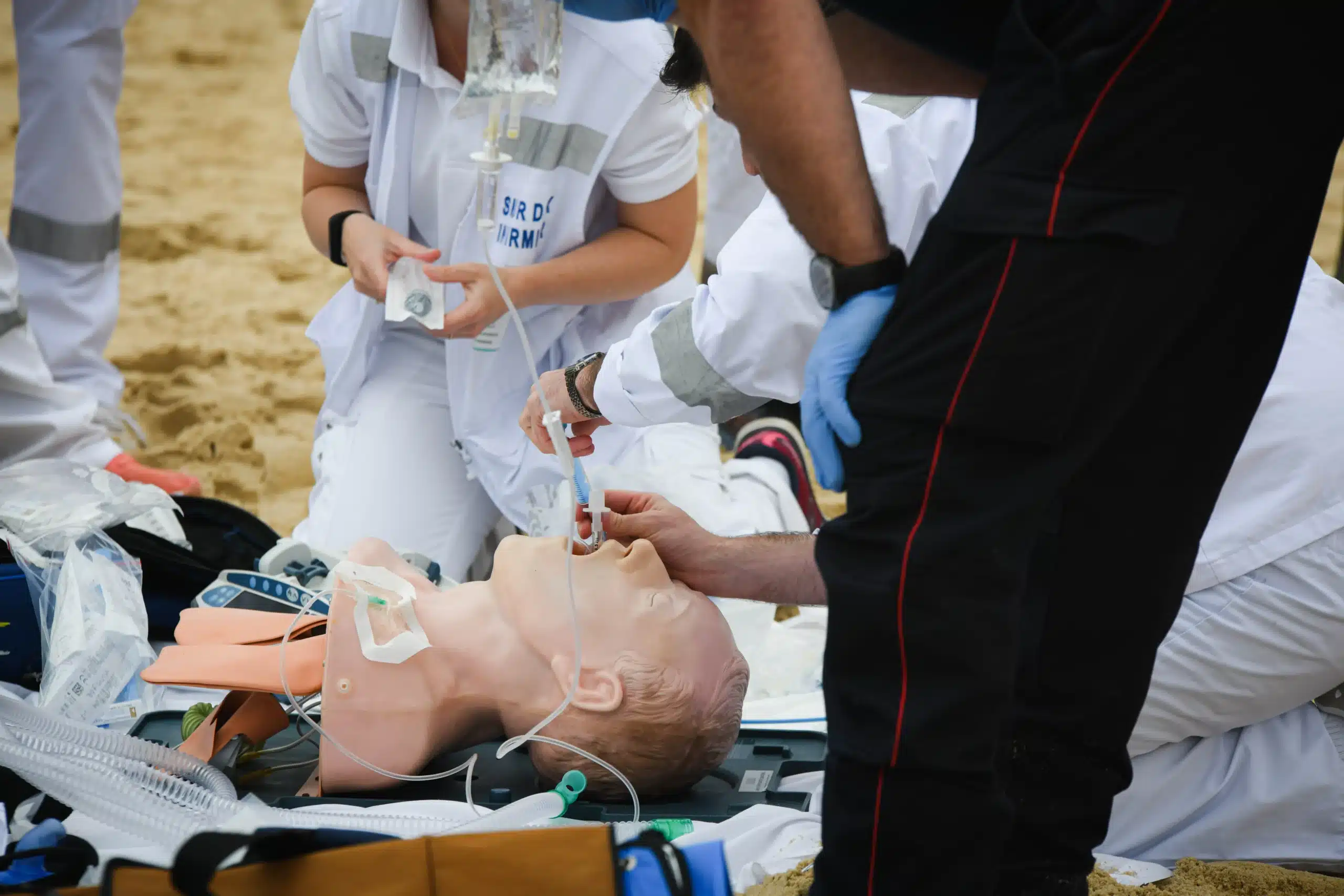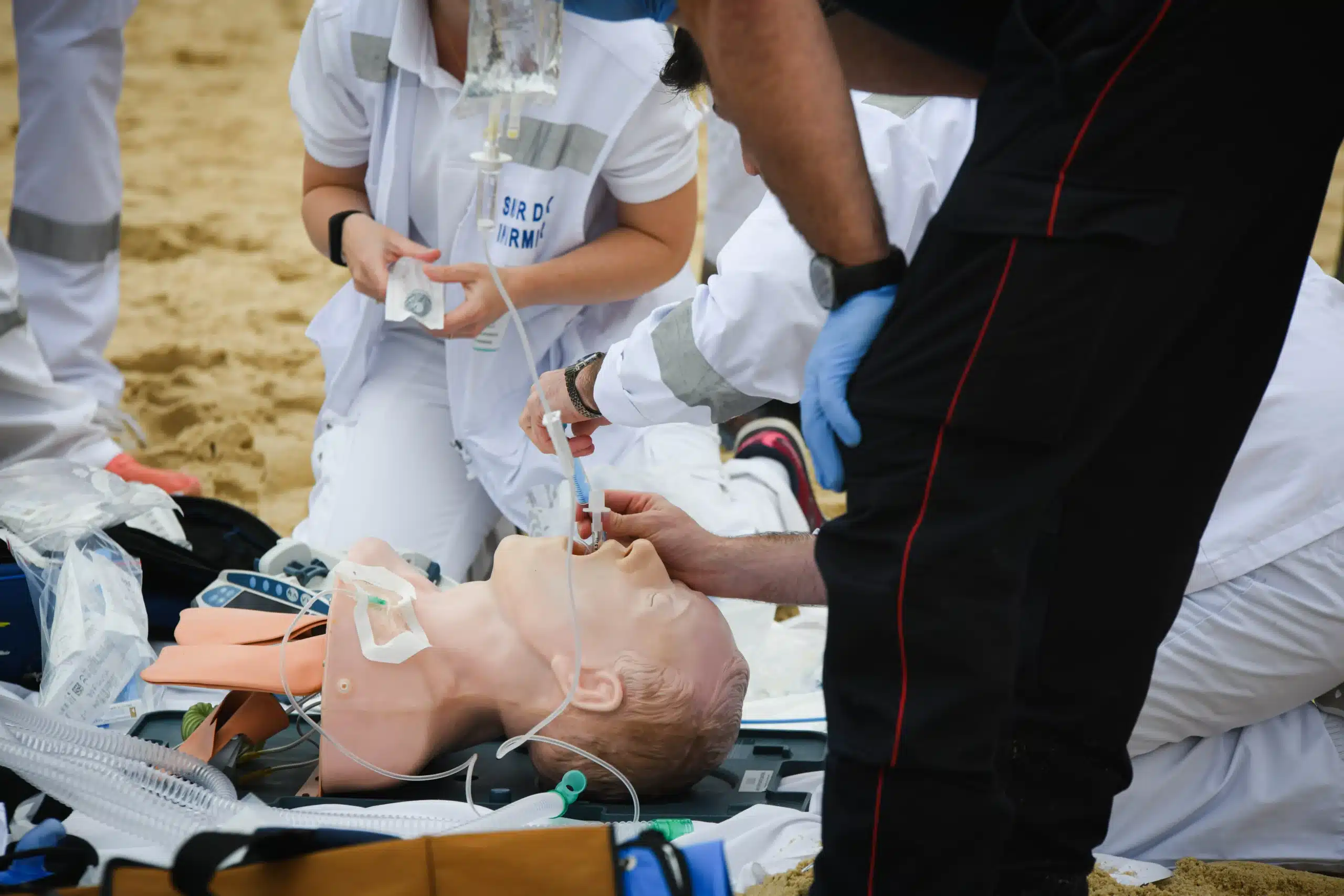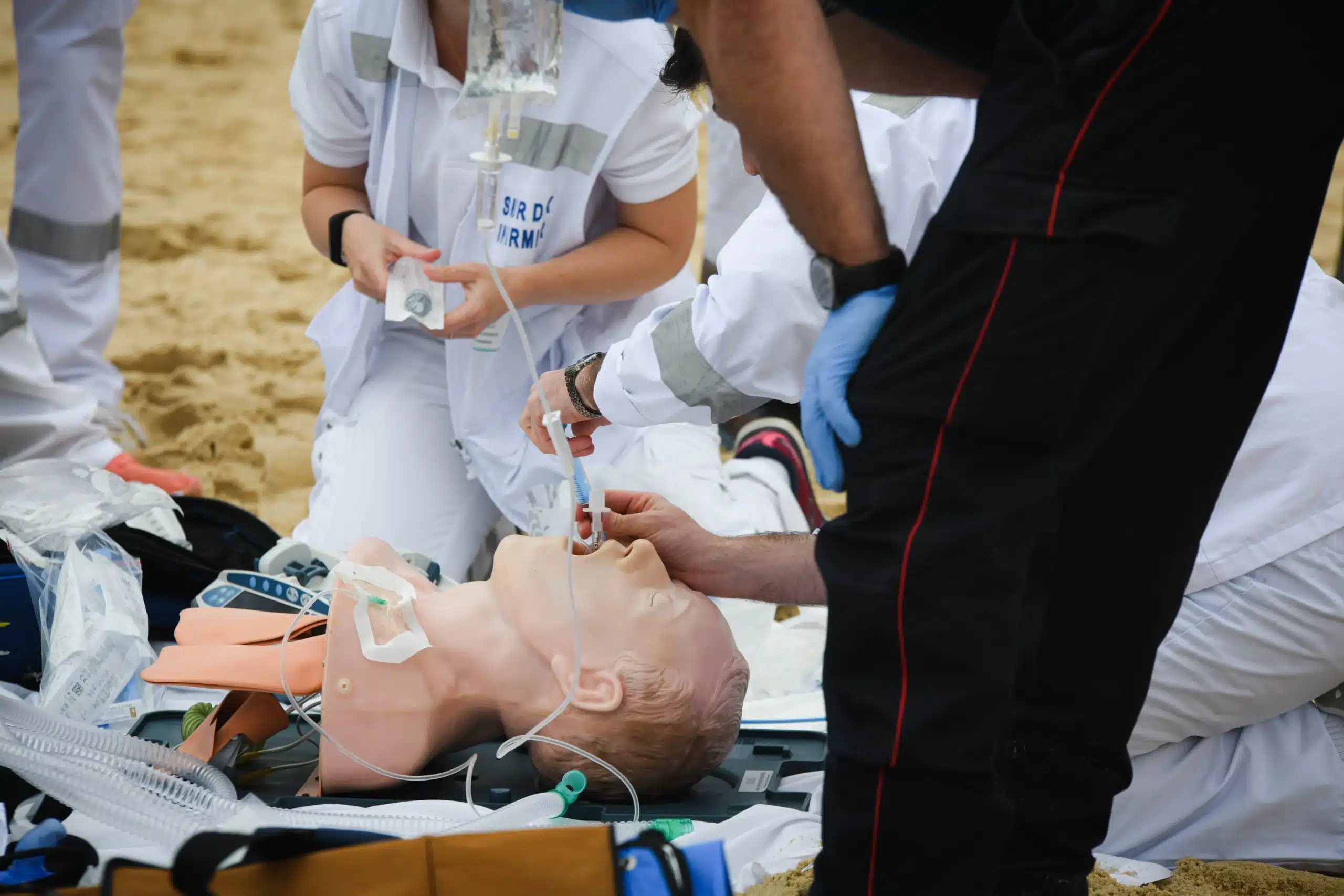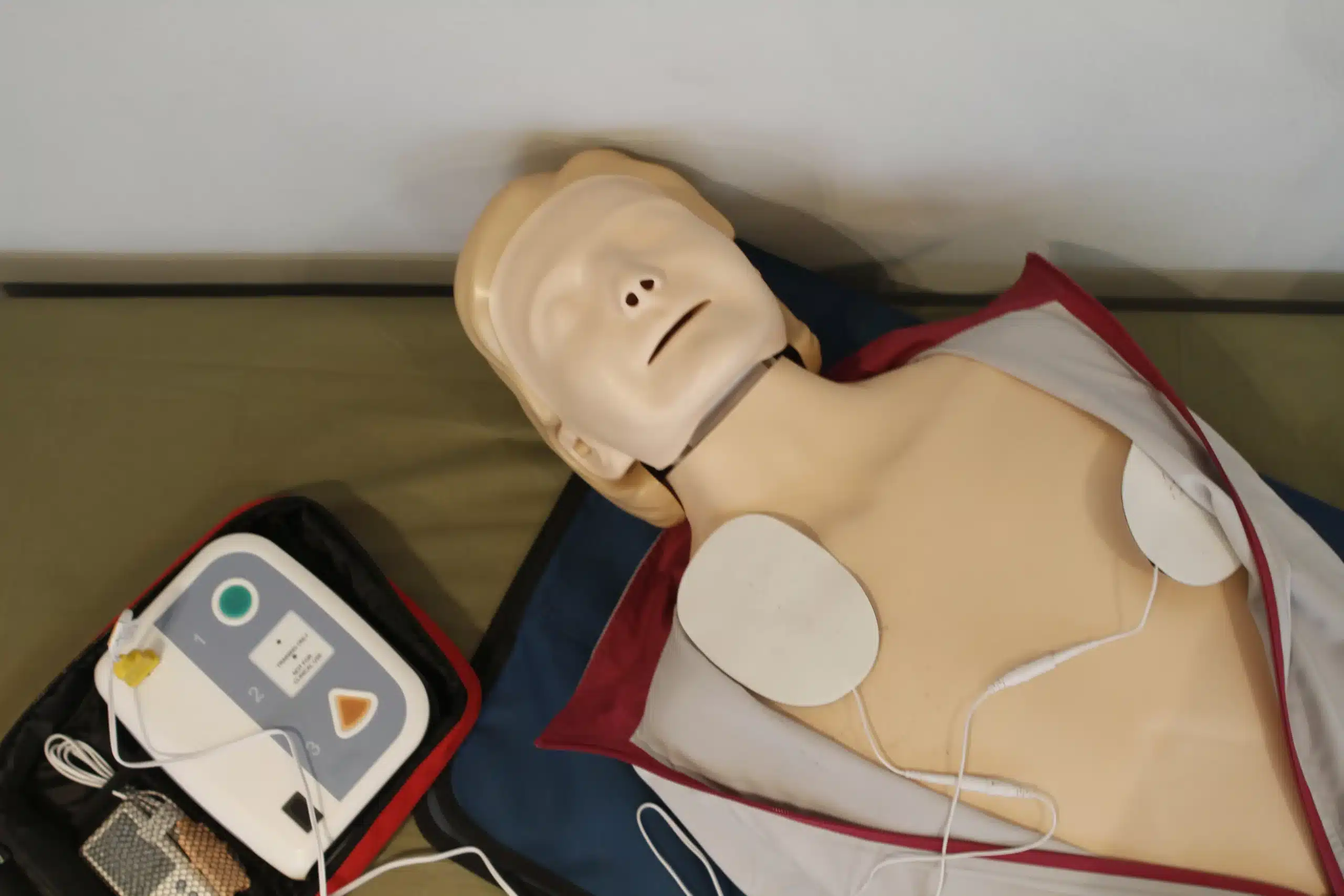Life in San Ramon is busy. Between work, family, and social commitments, finding time for essential training like CPR can be tough. That’s why online CPR classes in San Ramon are gaining popularity. They offer a flexible and convenient way to learn these vital skills without disrupting your already packed schedule. This guide will explore the world of online CPR classes in San Ramon, covering everything from the different types of certifications available to what you can expect during an online course. We’ll also address common concerns about online CPR training and provide you with a list of reputable providers in the San Ramon area. Get ready to discover how you can become a life-saver on your own terms.
Key Takeaways
- Online CPR training fits your busy life. Learn the essentials at your own pace, then demonstrate your skills in person.
- Find the right CPR certification for your needs. From basic CPR and First Aid to advanced professional certifications, explore the options and choose the best fit.
- Select a trusted provider for quality training. Look for AHA-certified courses and check student reviews to ensure a positive learning experience.
What are Online CPR Classes in San Ramon?
Online CPR classes in San Ramon offer a flexible way to learn life-saving skills without disrupting your schedule. These courses blend online learning with in-person skills sessions, allowing you to study the theoretical material at your own pace before demonstrating your skills to a certified instructor. This blended learning approach makes CPR certification accessible to busy professionals, parents, and anyone else looking to gain these essential skills. Many online CPR classes in San Ramon adhere to the standards of the American Heart Association (AHA), ensuring you receive high-quality training and an official AHA certification card upon successful completion of the course.
Several established training centers in San Ramon, including Safety Training Seminars, offer online CPR courses. These courses cover essential topics like adult, child, and infant CPR, AED use, and how to respond to choking emergencies. Some providers, like Heart Start CPR, also offer onsite training classes in addition to their online options, giving you the flexibility to choose the format that best suits your needs. Whether you prefer learning from home or in a traditional classroom setting, you can find a CPR course in San Ramon that works for you. Bay Area CPR also provides AHA-certified courses, including BLS, ACLS, and PALS, in convenient online formats. The flexibility of online learning makes it easier for both healthcare professionals and the general public to become certified. For those seeking a long-standing training center, the CPR Training Center in San Ramon has been AHA-certified for nearly three decades and offers a variety of online courses.
Types of Online CPR Courses
Knowing which CPR certification is right for you depends on your personal and professional needs. This section breaks down the different types of online CPR courses available in San Ramon.
Basic Life Support (BLS)
BLS certification focuses on providing immediate lifesaving care to adults, children, and infants experiencing cardiac arrest or respiratory distress. It emphasizes the ABCs of CPR (Airway, Breathing, and Circulation), along with training on how to use an Automated External Defibrillator (AED). BLS certification is often a prerequisite for other advanced certifications and is crucial for healthcare providers, first responders, and anyone working in a healthcare setting. Learn more about our BLS certification course.
CPR and First Aid
This combined CPR and First Aid certification equips individuals with the skills to respond to a broader range of emergencies. In addition to CPR and AED training, it covers common first aid scenarios like treating burns, cuts, sprains, and other injuries. This certification is valuable for anyone who wants to be prepared for unexpected medical situations, from parents and teachers to workplace safety officers and community volunteers.
Advanced Cardiovascular Life Support (ACLS)
ACLS certification goes beyond the basics of CPR and is designed for healthcare professionals who manage cardiovascular emergencies. It covers advanced life support techniques, including airway management, intravenous drug administration, and electrocardiogram (ECG) interpretation. This course is essential for physicians, nurses, paramedics, and other healthcare providers involved in resuscitation efforts. Our RQI classes offer more information on advanced cardiovascular life support training.
Pediatric Advanced Life Support (PALS)
PALS certification focuses on the specialized needs of infants and children facing medical emergencies. It covers pediatric-specific CPR techniques, airway management, and treatment protocols for respiratory and circulatory problems. PALS certification is essential for pediatricians, pediatric nurses, emergency medical technicians, and other healthcare professionals working with young patients. Learn about our discount group classes if you’re interested in PALS certification with colleagues.
Top Online CPR Class Providers in San Ramon
Finding the right CPR class can feel overwhelming with so many options. To simplify your search, we’ve compiled a list of reputable online CPR class providers in San Ramon. Remember to confirm with your employer or licensing board that your chosen course meets their requirements.
Safety Training Seminars
Safety Training Seminars offers a variety of American Heart Association-certified courses, including BLS, ACLS, PALS, First Aid, and CPR. Classes are available in San Ramon, conveniently located near Pleasanton and Walnut Creek. They also offer on-site training and group discounts to make training accessible and affordable.
Heart Start CPR
Heart Start CPR provides online and onsite training with certifications in CPR, First Aid, BLS, ACLS, and PALS. Serving various locations, including San Ramon, San Francisco, and Oakland, they offer flexibility for busy schedules. Visit their website for more information.
CPR Training Center
CPR Training Center in San Ramon has been an American Heart Association (AHA) certified training center for nearly three decades. They offer various CPR and advanced life support courses, including ACLS, PALS, BLS, and NRP, with options for online training and tailored group sessions.
American Red Cross
The American Red Cross offers CPR certification classes designed to prepare individuals for emergencies, equipping participants with the skills to assist in cardiac or breathing emergencies.
ProCPR
ProCPR provides a comprehensive online CPR training program with video-based instruction and an in-person skills test with a certified instructor. This blended learning approach allows students to learn online at their own pace and then demonstrate their skills in person. Visit their website for program details.
What to Expect in an Online CPR Course
Online CPR courses offer flexibility for busy professionals and anyone looking to learn lifesaving skills at their own pace. While the convenience of online learning is a major draw, it’s helpful to understand how these courses blend online instruction with practical application. Here’s a breakdown of what you can typically expect:
Course Structure and Learning Materials
Online CPR courses often use a blended learning approach, combining online modules with in-person skills sessions. You’ll start by accessing the online portion of the course, which includes video lessons, interactive exercises, and downloadable resources. These materials cover essential topics like recognizing the signs of a cardiac arrest, performing chest compressions, and providing rescue breaths. The online format allows you to review the material as often as needed and progress through the modules at your own speed. Completing the online videos significantly improves your chances of passing the in-person skills test. Pleasanton CPR Classes follows the American Heart Association (AHA) guidelines, ensuring you receive high-quality, up-to-date training. You can explore our AHA-certified CPR and first-aid courses on our website.
Skills Assessment and Hands-On Practice
After completing the online modules, you’ll schedule an in-person skills session. This session focuses on demonstrating the techniques you learned online. You’ll practice on a voice-assisted mannequin (VAM), which provides real-time feedback on your compressions and breaths. Skills testing often takes place without a live instructor physically present, but support is readily available by phone if you have questions. You’ll receive a free keychain CPR training mask at your skills session. This handy tool reinforces the importance of barrier devices in CPR.
Certification Process
Once you successfully complete the skills assessment, you’ll receive your official CPR certification card the same day. This certification is valid for two years. Pleasanton CPR Classes also offers support beyond the initial certification, including information on renewal options when the time comes. We’re committed to helping you maintain your skills and confidence in providing CPR.
Certification and Accreditation
Choosing the right online CPR class means understanding certification and accreditation. This ensures your training meets industry standards and is recognized by employers and organizations.
American Heart Association (AHA) Certification
The American Heart Association (AHA) offers widely respected CPR and first-aid training. These AHA-certified courses cover essential techniques and protocols, giving you the confidence to respond effectively during emergencies. Pleasanton CPR Classes, an AHA Training Center, offers these certifications in nearby Pleasanton, ensuring your training aligns with national standards. Our convenient location serves Pleasanton, Dublin, and San Ramon. For more information about our offerings, visit our CPR and First Aid Certification page. We also offer group discounts and a low price guarantee.
Validity and Renewal
Online CPR certifications are typically valid for about two years, though this can vary. Check with the certifying organization to confirm the exact duration and any renewal requirements. Resources like CPR For Employment offer helpful information on certification validity and renewal processes. Before enrolling, always verify a course’s accreditation by a reputable organization like the AHA and confirm its acceptance by your employer or any relevant organization.
Pricing for Online CPR Classes in San Ramon
CPR certification costs vary, impacting your total investment. Understanding these factors helps you budget and find the best value.
Factors Affecting Cost
Several factors influence online CPR class pricing in San Ramon. Course type plays a significant role. For example, Basic Life Support (BLS certification) usually has a different price than Advanced Cardiovascular Life Support (ACLS certification) or Pediatric Advanced Life Support (PALS certification). The training provider also matters, as different organizations have varying pricing structures. Finally, included supplementary materials or resources, like practice equipment or study guides, can affect the overall price.
Group Discounts and Special Offers
Many CPR training providers offer group discounts, making it cost-effective for workplaces, community groups, or families. Check with specific providers in San Ramon for their group discount policies. Also, keep an eye out for special promotions or seasonal offers. Inquire about any ongoing promotions when you contact a training center. A low-price guarantee can also provide peace of mind, ensuring you’re getting good value for your training.
Benefits and Challenges of Online CPR Training
Online CPR training offers a convenient way to learn this life-saving skill, but it’s important to understand both the advantages and limitations before signing up. This section explores the pros and cons of online CPR certification to help you make an informed decision.
Advantages of Online Learning
Online CPR courses offer unparalleled flexibility. You can learn at your own pace, fitting the training around your busy schedule. This is especially helpful for working professionals, parents, and students. Safety Training Seminars, for example, offers convenient online components like RQI courses to help you prepare before your in-person skills evaluation. Plus, online courses are often more affordable than traditional classroom training, and many providers, including Pleasanton CPR Classes, offer group discounts to make training even more budget-friendly. This accessibility, combined with the low-price guarantee offered by some providers, makes online learning an attractive option. Accessing high-quality, AHA-certified courses, whether for basic life support or CPR and First Aid, has never been easier.
Developing Practical Skills
While online courses excel at teaching foundational knowledge, CPR requires hands-on practice. Developing the muscle memory and confidence to perform CPR effectively requires physical interaction with training equipment. Many online CPR courses address this by requiring an in-person skills test after the online portion is complete. This guide to CPR training in San Ramon highlights training centers that combine online learning with in-person skills sessions. This blended approach allows you to learn the theory online and then practice your skills under the guidance of a certified instructor. The skills testing often involves a voice-assisted mannequin (VAM), which provides feedback on your technique. While a live instructor may not always be physically present during this evaluation, support is typically available by phone.
Student Engagement and Motivation
One of the strengths of online CPR training is its potential for enhanced student engagement. Interactive elements, videos, and immediate feedback can make learning more dynamic and motivating. Research shows students using mannequins with real-time feedback are more engaged and strive for better CPR performance. The ability to review material at your own pace and repeat sections as needed also contributes to a deeper understanding of the concepts. This personalized learning experience can be more effective than a traditional classroom setting for some learners.
Choose the Right Online CPR Class
Finding the right online CPR class means considering a few key factors to ensure it fits your professional needs and learning style. A good course will equip you with the confidence and skills to handle emergencies effectively.
Professional Requirements
Before you begin searching for online CPR classes, figure out which certifications your job or workplace requires. Some professions mandate certifications from specific organizations like the American Heart Association (AHA). If you’re in the San Ramon area, the AHA offers various courses designed for different professional needs. Pleasanton CPR Classes, for instance, is an AHA Training Center offering certifications in BLS, CPR and First Aid, and other areas. Ensure the online CPR class you select meets these requirements.
Course Content and Flexibility
A quality online CPR course should have comprehensive training materials and a flexible learning format. Look for courses covering essential CPR techniques with clear, engaging content, and opportunities for practice and feedback. San Ramon CPR Courses provides a mix of online and in-person learning, including convenient options like group discounts. Including online elements like the Resuscitation Quality Improvement (RQI) program can significantly improve your readiness for in-person skills testing.
Provider Reputation and Student Feedback
Choosing a reputable provider is essential for a positive learning experience. Research the provider’s credentials, experience, and what other students are saying. Positive reviews and testimonials can give you a sense of the quality of instruction, support, and overall learning environment. Studies show that students receiving immediate, electronic feedback, such as that from the RQI program, are more engaged and motivated learners. This feedback style has proven effective in training nursing students to become competent in CPR skills, emphasizing the importance of a provider that values effective feedback. Pleasanton CPR Classes offers RQI classes and a low price guarantee, making them a solid option for your CPR training. Take the time to explore different providers and compare what they offer before deciding. Consider things like class size, instructor qualifications, and the availability of continued support.
Addressing Online CPR Class Concerns
It’s understandable to have questions about online CPR training. Let’s address some common concerns head-on.
Validity of Online Certifications
One of the biggest questions surrounding online CPR training is the validity of the certifications. Rest assured, online CPR certifications can be perfectly valid. The key is to ensure your certification comes from a recognized organization like the American Heart Association (AHA) or the American Red Cross (ARC). These organizations uphold rigorous standards, ensuring their online programs meet the same criteria as in-person classes. For example, our BLS certification courses at Safety Training Seminars meet AHA guidelines and are widely accepted.
Employer Acceptance
While online CPR certifications are generally accepted, it’s always wise to confirm with your employer or licensing board. Some organizations may still require or prefer traditional, in-person training. Checking their specific requirements beforehand will save you time and potential headaches. Reach out to your HR department or relevant professional organization for clarification.
Skill Retention and Confidence
Another common concern is whether online learning can effectively teach practical skills. While online courses deliver the knowledge component effectively, hands-on practice is crucial for developing true confidence and proficiency in CPR. Many online CPR courses, including those offered by Safety Training Seminars, address this by requiring in-person skills sessions. These sessions allow you to practice techniques on mannequins under the guidance of a certified instructor. Studies show that feedback during practice, especially with advanced mannequins, significantly improves skill retention and student engagement. For instance, RQI programs use real-time feedback to enhance the learning process and build confidence in performing CPR.
Additional CPR Resources
Finding the right resources can make a real difference in your CPR training journey. Whether you’re looking for extra practice, want to continue your education, or need support from a community of learners, there are several helpful options available.
Practice Materials and Study Guides
The American Heart Association offers a wide variety of resources for CPR and First Aid training, including practice materials and study guides. These resources cater to different learning styles and can help reinforce the skills you learn in class. For troubleshooting tips and access to online courses, the Response Institute provides a helpful student resource section. Having these extra tools can increase your confidence and ensure you’re well-prepared for any emergency.
Continuing Education
Staying up-to-date with the latest CPR guidelines is crucial. The Red Cross emphasizes the importance of ongoing training and offers certification classes to keep your skills sharp. For finding upcoming courses and renewing your certification, their Learning Center provides a helpful resource guide. Regularly refreshing your knowledge ensures you can respond effectively in critical situations.
Community Support and Forums
Connecting with other learners can create a supportive environment for your CPR training. USCPR Online offers free CPR classes and continued support after you complete your course, along with premium certification and renewal options. With over 30 years of experience providing CPR, BLS, and First Aid training, Save A Life CPR offers a helpful FAQ section to address common questions and concerns. These communities can provide valuable insights and encouragement as you progress through your training.
Related Articles
- Pediatric CPR & First-Aid Classes in San Ramon – Pleasanton CPR Classes
- American Heart Association CPR Classes in San Ramon – Pleasanton CPR Classes
- BLS Renewal in San Ramon: Your Guide to Certification – Pleasanton CPR Classes
- HeartCode PALS Dublin: Your Certification Guide – Pleasanton CPR Classes
- Pleasanton CPR Training: A Complete Guide – Pleasanton CPR Classes
Frequently Asked Questions
What’s the difference between online and in-person CPR classes?
Online CPR classes offer more flexibility, letting you learn the course material at your own speed. You’ll still need to attend an in-person skills session to practice and be evaluated on a mannequin. Traditional in-person classes involve learning and practicing in a classroom setting with an instructor present throughout. Both options lead to the same certification, so it comes down to your learning preference and schedule.
Which CPR certification do I need?
The best CPR certification for you depends on your situation. Basic Life Support (BLS) is often required for healthcare providers and those in related fields. CPR/First Aid is a good general certification for anyone wanting to be prepared for emergencies. More advanced certifications like ACLS and PALS are geared towards healthcare professionals dealing with more complex medical situations. If you’re unsure, check with your employer or a professional organization in your field.
How long does online CPR certification last, and how do I renew it?
CPR certifications are typically valid for two years. Renewal involves retaking the course to refresh your skills and knowledge of any updated guidelines. Contact your certifying organization or training provider for specific renewal procedures.
How can I find reliable online CPR classes in San Ramon?
Start by searching online for “online CPR classes San Ramon.” Look for providers offering AHA or Red Cross certification, as these are widely recognized. Check reviews and testimonials to gauge the quality of the training. Don’t hesitate to contact providers directly to ask about their programs, costs, and schedules.
What should I expect during the in-person skills session for online CPR?
You’ll practice the skills you learned online using a mannequin. A certified instructor will evaluate your technique and provide feedback. While the instructor may not always be physically present, support is usually available by phone if needed. You’ll receive your certification card upon successful completion of the skills test.
